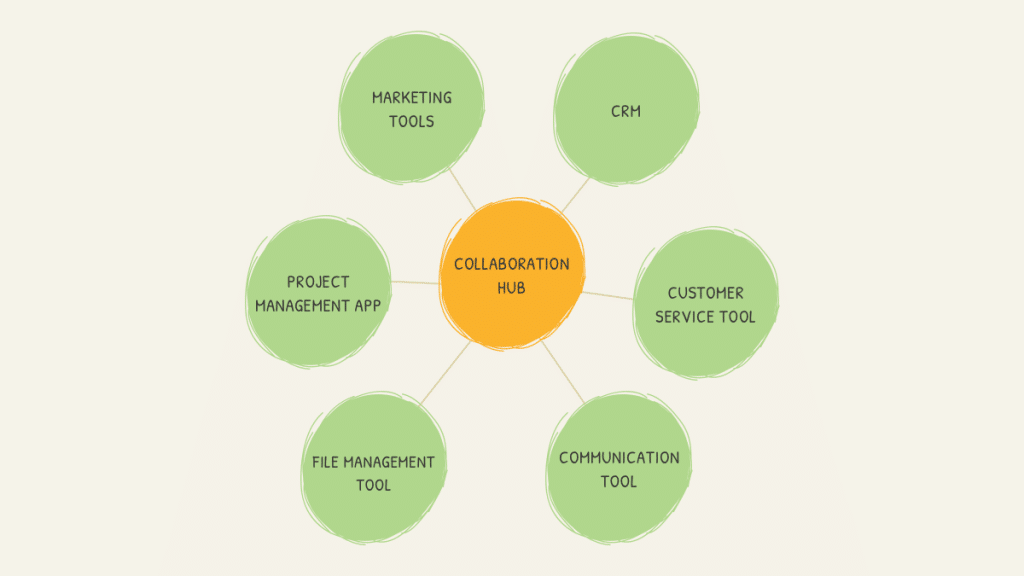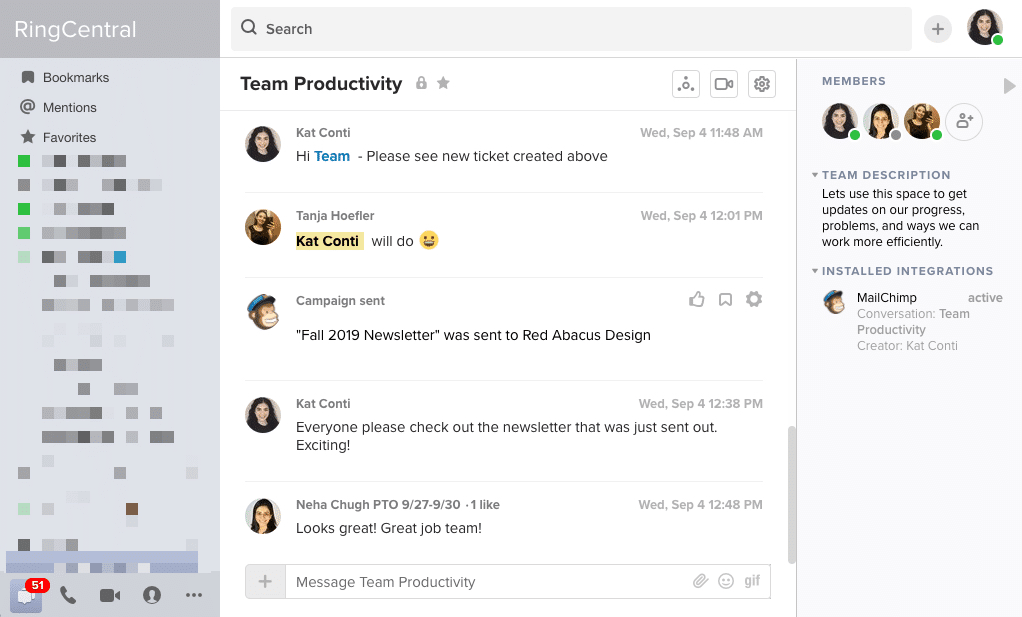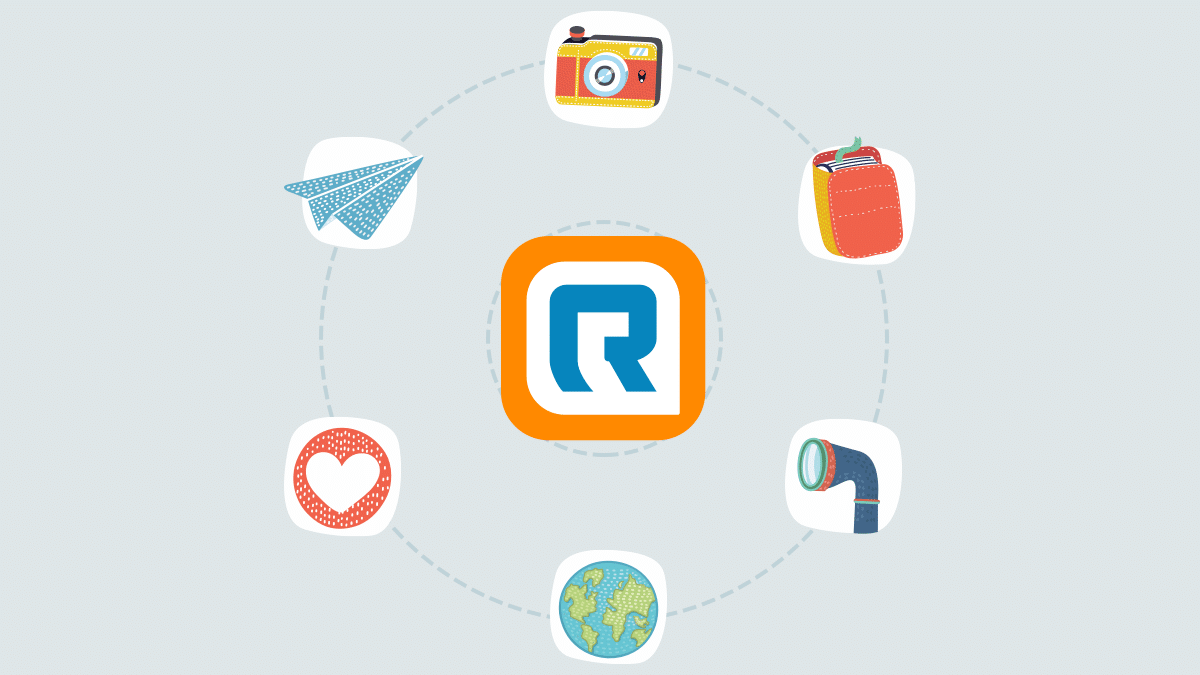As more and more offices create multiple locations or offer remote work opportunities, it can feel difficult to encourage collaboration among teammates who may have never even met face-to-face.
But it doesn’t have to be so hard to create a collaborative workplace.
By elevating your technology from a bunch of individual tools to a true remote work hub, you can make it easier for your team to work together, whether they’re across the world or across the table from each other.
In this post, we’ll look at:
- What a remote work hub is
- What a remote communication hub looks like
- How to create a remote work hub for your team
👀 Improve your employees’ remote work experience with our free remote onboarding checklist!
What is a remote work hub?
Before we dive in, you might be wondering—what does a “remote work hub” really mean?
Essentially, a remote work hub for your business is a central resource that supports—you guessed it—collaboration and communication across the company. It allows employees within teams and from different departments to share notes, communicate what they’re working on, and get on the same page.
Building an effective remote communication hub is the kind of proactive step that’ll help you create a seamless team culture in your business and reinforce to your colleagues that sharing information across departments isn’t just a nice idea—it’s how things are actually done in your workplace. (Learn more about the keys to effective collaboration.)
Your remote work hub gets everyone in one place digitally, even if they can’t be in one physical space. And as companies move toward digital workplaces, it’s more important than ever to have a central place where your teammates can connect and collaborate.
The way that people work together is changing, and your business has to adapt along with it.
What does a remote work hub look like?
When we talk about a communication hub for your business communications, it can be hard to envision what that really looks like.
The term hub means the center of an activity or network, but it can also refer to the central part of a wheel, from which the spokes radiate, which can be a helpful visual. Imagine your communication hub as that center for connection for all of your teammates across every department.
The apps and tools that are needed for department-specific tasks are the spokes of the wheel:

Pro-tip: Avoid tech and app overload with a streamlined remote work hub that’s made up of versatile tools. This will help you and your team spend less time switching between different tabs and windows, and save money too because you won’t have to pay as much for 10 or 12 different apps when two or three will do the job.
Blueprint of a communication hub for distributed teams
Your company’s specific remote work hub will depend on how many employees you have, what essential functions you need from your technology tools, and how you want to connect everything.
No matter what tools the departments in your company use, the key to transforming them into a true communication hub is thinking through how each of them can work together.
We’re going to lay out a blueprint that many businesses will find helpful, but you can (and should) customize it to your business needs.
The hub: your communication command center
The foundation of collaboration is communication, so having the right central communication tool is the crucial foundation of a well-oiled hub. Your communication tool connects everyone in the organization—even remote employees or those who work in different offices.
It keeps everyone connected and on the same page and opens up the possibility of collaboration across distances and departments.
The ideal foundation for your remote work hub is something that allows you to communicate in a variety of different ways, from receiving inbound phone calls to making video calls to team messaging. With RingCentral, for example, you can share screens in real time, jump on a video call, and share files—all in the same platform:
Plus, with the task management functionality, you can assign and track the progress of projects among your team, and everyone can see what they’re each working on, too.
Having task management and communication in one place means that you can stay on top of projects easily. Checking in with a team member? Assign a follow-up task right from that conversation, and attach the relevant file they need to get the job done:

RingCentral is free to get started with, so you can see all of the functionality for yourself before committing to a paid plan for your team. Once you decide to dive in, paid plans start at $5 per month.
Once you’ve figured out the center of your communication hub, it’s time to select the tools that’ll not only serve the specific needs of each department, but also integrate with your communication app to create the total hub effect.
Here are a few examples of the tools that should make up the spokes of your communication hub and how they integrate to keep everyone working effectively as a team.
The spokes: marketing
If you’re using an email marketing platform to connect with potential customers, you’re probably used to this dilemma: do you trudge through the onslaught of emails with every subscribe and unsubscribe, or do you turn off email notifications—and remain in the dark?
When you integrate your email marketing platform (or other apps in your marketing tech stack) with your communications tool, you can avoid having to make that choice. Why clutter up your inbox when you can get notifications about your email marketing campaigns (here are some examples of brilliant email marketing) right in your team messaging app (which you’re already checking every minute anyway)?
For example, Mailchimp (which integrates with RingCentral) is an effective email marketing tool that lets you connect with prospects where they’re active and engaged: their inbox. The best part? Mailchimp is free to get started with.
With this integration in particular, you and your team will get RingCentral notifications when a welcome email is sent, for example, so you can prepare everyone for potential replies or get them ready to track other kinds of engagement:

You can also use RingCentral’s notifications to give the sales and support teams a heads-up about the emails you just sent, in case they get any follow-up questions. (More on how to write awesome customer support emails here.)
Sales and marketing are a notorious communication block at many companies, but it doesn’t have to be this way—having your marketing and sales tools both connected with your communication tool allows these teams to communicate better than ever before.
Since your sales and marketing staff can both see everything they’re working on in RingCentral’s messaging app, they can easily share updates and communications. Marketing can keep the sales team updated on new resources they’re creating, and sales can submit content requests and see the emails their prospects are receiving.
🕹️ Get a hands-on look at how RingCentral works by booking a product tour:
The spokes: file management
Speaking of content, you’ll want to be sure one of the spokes of your remote work hub is focused on file management. With all of the file sharing your team needs to do, we all know endless docs with titles ending in “version 2”, “final draft”, and “final final” flying back and forth over email just isn’t going to cut it.
Cut back on the clutter and use a platform like Google Drive for file sharing. We like Google because everyone can share documents, meaning editing capabilities are shared within and across teams.
From creating copy in Google Docs (learn about 27 time-saving Google Docs hacks), to uploading and sharing finalized images from design, to even sharing spreadsheets among the finance team, be sure to choose a platform that keeps everyone on the same page.
Plus, Google integrates with RingCentral to allow for seamless file management within your chat software. You don’t even have to send an email to share a file—just import the file from Google Drive right into your team chat, and everyone has access.

Sharing files within your chat platform helps to keep everything in one place, so there’s less hunting to find what you’re looking for later.
The spokes: sales
A good CRM (along with a Bluetooth headset, of course) is a lifeline for any salesperson—it’s where they can keep track of the entire journey of a prospect before they convert and decide to purchase. By having easy access to the details of prior conversations with prospects, your sales reps can go into any meeting prepared with great sales conversation starters based on information that’ll help a prospect make a decision.
Salesforce is a popular and dynamic “spoke” for sales teams to use to manage prospects—plus, you can integrate it with RingCentral to optimize your communication hub for selling.
By getting notifications about case updates and being able to view opportunities, create leads, and add notes to opportunities right within your chat platform, your sales team will be uniquely positioned to communicate both within their team and across the organization while working with leads.
When a marketing team member interacts with a lead on your website’s live -chat, for instance, they can immediately send a message to the sales team. After a manager assigns the prospect, the salesperson can create a new lead instantly and fill in the details of that pre-sales conversation before even opening Salesforce.
The notifications from Salesforce also allow your team to stay on top of updates to their cases without having to wade through an endless stream of emails or juggle a bunch of apps. With a notification in the same space where they’re already talking to coworkers, leads, and customers, salespeople can keep an eye on all of their opportunities at once, quickly acting when something changes.
Pricing for Salesforce begins at $25 per month.
The spokes: project management
We all love a to-do list, but as soon as you start working with a team and/or managing multiple projects at once, it’s time to let go of the pen and paper and start taking project management seriously.
The best project management softwares can help you break down large projects into individual tasks, keep track of what everyone is working on, and track the status of projects through completion.
Use a tool like Asana to keep everyone on the same page and prevent tasks falling through the cracks. With Asana, you can break a larger project down into smaller tasks, assign them to the right people, and set due dates for each stage of the project. That way, it’s easy to plan for when projects will realistically cross the finish line.
Asana even integrates with RingCentral so your team doesn’t have to flip between apps to keep track of project statuses. Asana can send notifications to RingCentral when your boards or cards are updated, eliminating email clutter and upleveling your team messaging app to a true remote work hub.
Asana is free to get started with.
The spokes: customer service
One of the unique things about RingCentral is that not only is it the communications nucleus for your own team, it’s a tool that’s incredibly useful for customer service teamwork as well.
By using RingCentral to connect with customers, you can improve the quality and speed of customer communications by keeping your support team working within one platform for both team and customer communications—and provide the kind of customer experience that keeps your customers happy.
Your support team will be empowered to work quickly and efficiently within one platform that they know well, instead of having to jump around from one space for customer conversations to another for coworker conversations and back again.
By having customer conversations right in your remote work hub, support team members are empowered to get answers quickly and efficiently by messaging or adding the right team members to the conversation.
They can even work collaboratively with customers through video calls or by sharing screens to solve problems together step by step.
Ultimately, this will help you boost your customer retention rate.
Ready to create your remote work hub?
By choosing the right foundation for effective communication and integrating with the tools and apps your team depends on, you can build an effective communication hub that’s customized to your business needs.
The next time you’re looking to add a new technology tool to the mix, you’ll know to ask not only how your team will use it, but also how it’ll fit among the other spokes of your hub.
Originally published Jan 01, 2021, updated Jun 17, 2024







